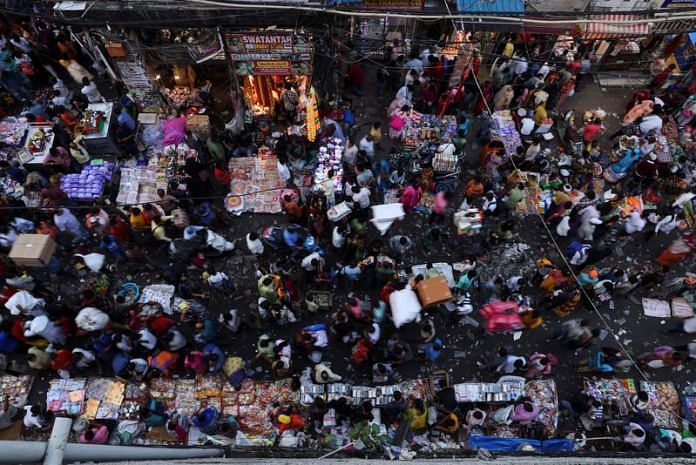India has finally surpassed China to become the world’s most populous country. The United Nations Population Fund, or UNFPA, on Wednesday said India now has 142.86 crore people — about 3 lakh more than China’s population of 142.57 crore.
“We see India’s 1.4 billion people as 1.4 billion opportunities. India’s story is a powerful one. It is a story of progress in education, public health and sanitation, economic development as well as technological advancements,” UNFPA India representative Andrea M. Wojnar said.
From The New York Times to Al Jazeera, India’s status of being the world’s most populous country raised many eyebrows. And that’s why India’s population is ThePrint’s Newsmaker of the Week.
The UNFPA’s executive director Natalia Kanem said in a press note that the trend on population is likely to change from this year onwards.
“The ranking of the world’s most populous countries will change significantly over the next 25 years,” she said.
But it is India that’s drawing most of the attention.
“India is a country primed to work. More than two-thirds of all Indians are between the ages of 15 and 59… But this opportunity comes with huge challenges. That “demographic dividend” could instead become something like a disaster,” the NYT wrote.
Al Jazeera also raised similar questions. “India has the world’s largest workforce. But without enough good jobs, that unmatched advantage could prove a disaster,” it said in an article.
India’s high population amid low productivity does invite questions of quantity versus quality of the labour force.
“Population is important but talents are also important…China has taken active measures to respond to population ageing,” said China’s foreign ministry spokesperson Wang Wenbin. “As Premier Li Qiang pointed out, our population dividend has not disappeared. Our talent dividend is booming, and the impetus for development is strong,” she added.
A study released by US-based think tank Pew Research Center in February said people aged under 25 comprise 40 per cent of India’s population right now and that the share of Indians aged 65 and above will remain under 20 per cent until 2063.
Also read: India to lose ‘demographic dividend’? Govt report says over-30s to outnumber ‘young’ by 2036
The economic fallouts
But this could have economic consequences if most of the young lack routine skills. The National Sample Survey Office (NSSO)’s 2020-21 survey throws light on multiple issues that India needs to address with respect to its population.
To begin with, India’s youth must move from not doing anything to doing productive work. According to the NSSO’s report released in March, nearly 33 per cent of India’s youth is neither employed nor in education or training (NEET). A large part of it accrues to the burden of the care economy that is put on Indian women’s shoulders.
This could explain why more than half of India’s young women aged 15-29 are neither doing work that pays them financially nor are looking for employment — 90 per cent of them are engaged in unpaid household chores.
One of the major reasons India has such high NEET rates is the way gender stereotyping of roles binds women to stay at home. According to a paper released by IIT Delhi’s TRIP Centre in February, about 50 per cent of India’s women in urban areas do not step out even once on a given day. The time spent on cooking, taking care of children and doing other household chores hosts a sea of difference among men and women.
While India maintains itself as the software outsourcing capital of the world, the share of people needed to do these well-paying jobs is limited while the low rate of people employed in manufacturing paves way for deepening income inequalities.
There is also fear that the rise of Artificial Intelligence — like ChatGPT — will greatly impact India, which has a large base of cheap coders that the world hires, as reported by journalist Saritha Rai for Bloomberg.
Moreover, the number of people skilled in information and communication technology is abysmally low, with many unable to do basic computer work like sending emails with attachments, making a presentation or doing basic arithmetic on spreadsheets, according to the NSSO’s findings.
In November last year, when the world’s population had reached 8 billion, India had found that of the latest 1 billion population added in the past 12 years, nearly 5 per cent came from just two states — Uttar Pradesh and Bihar — which rank at the bottom of per capita income among big states.
These two states alone added more people to the world than the USA, Pakistan, Bangladesh, Egypt or even Indonesia.
So overall, India’s young population needs to be nurtured and transformed into doing productive, well-paying work. Until that happens, the status of being the most populated country in the world should be nothing but a cause for worry.
(Edited by Prashant)



